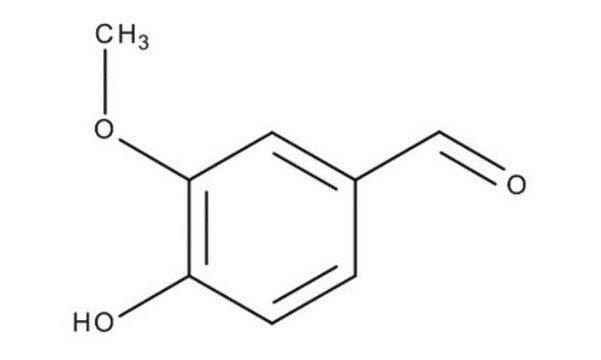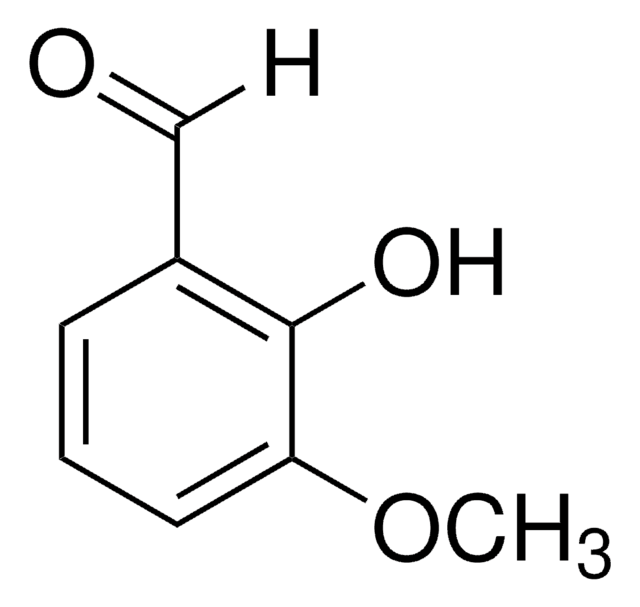V1104
Vanilline
ReagentPlus®, 99%
Synonyme(s) :
4-hydroxy-3-méthoxybenzaldéhyde, Aldéhyde vanillique
About This Item
Produits recommandés
Densité de vapeur
5.3 (vs air)
Niveau de qualité
Pression de vapeur
>0.01 mmHg ( 25 °C)
Gamme de produits
ReagentPlus®
Pureté
99%
Forme
powder or crystals
Point d'ébullition
170 °C/15 mmHg (lit.)
Pf
81-83 °C (lit.)
Solubilité
ethanol: soluble
Groupe fonctionnel
aldehyde
Chaîne SMILES
COc1cc(C=O)ccc1O
InChI
1S/C8H8O3/c1-11-8-4-6(5-9)2-3-7(8)10/h2-5,10H,1H3
Clé InChI
MWOOGOJBHIARFG-UHFFFAOYSA-N
Informations sur le gène
rat ... Ar(24208)
Vous recherchez des produits similaires ? Visite Guide de comparaison des produits
Description générale
Application
Informations légales
Mention d'avertissement
Warning
Mentions de danger
Conseils de prudence
Classification des risques
Eye Irrit. 2
Code de la classe de stockage
11 - Combustible Solids
Classe de danger pour l'eau (WGK)
WGK 1
Point d'éclair (°F)
319.6 - 321.4 °F - closed cup
Point d'éclair (°C)
159.8 - 160.8 °C - closed cup
Équipement de protection individuelle
dust mask type N95 (US), Eyeshields, Gloves
Faites votre choix parmi les versions les plus récentes :
Déjà en possession de ce produit ?
Retrouvez la documentation relative aux produits que vous avez récemment achetés dans la Bibliothèque de documents.
Les clients ont également consulté
Notre équipe de scientifiques dispose d'une expérience dans tous les secteurs de la recherche, notamment en sciences de la vie, science des matériaux, synthèse chimique, chromatographie, analyse et dans de nombreux autres domaines..
Contacter notre Service technique







